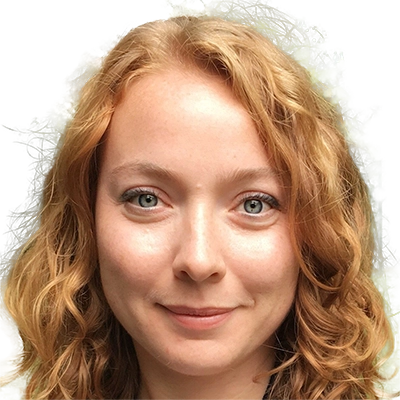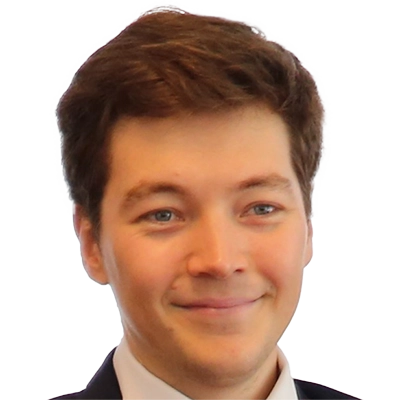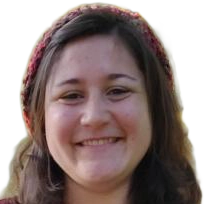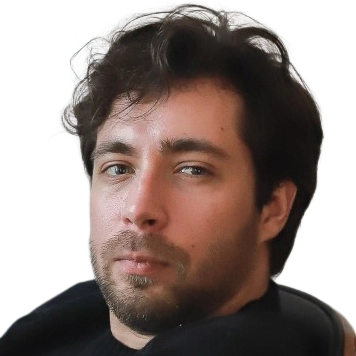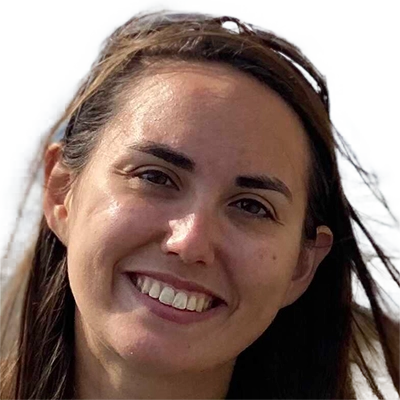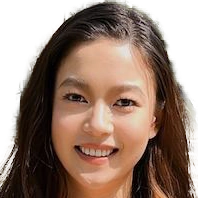Research Group Zeynep Akata
Zeynep Akata
is a Liesel Beckmann Distinguished Professor of Computer Science at TUM and the director of the Institute for Explainable Machine Learning at Helmholtz Munich.
Zeynep Akata’s field of research is explainable machine learning. Her goal is to build transparent computer algorithms that can make comprehensible decisions. Her approach combines different methods of machine vision, machine learning and natural language processing. Her scientific vision is to create a self-explanatory artificial intelligence that can learn through minimal feedback and interact reliably with humans.
Team members @MCML
PostDocs
PhD Students
Recent News @MCML
Publications @MCML
2025
[46]
M. Bini • O. Bohdal • U. Michieli • Z. Akata • M. Ozay • T. Ceritli
MemLoRA: Distilling Expert Adapters for On-Device Memory Systems.
Preprint (Dec. 2025). arXiv
MemLoRA: Distilling Expert Adapters for On-Device Memory Systems.
Preprint (Dec. 2025). arXiv
[45]

L. Eyring • S. Karthik • A. Dosovitskiy • N. Ruiz • Z. Akata
Noise Hypernetworks: Amortizing Test-Time Compute in Diffusion Models.
NeurIPS 2025 - 39th Conference on Neural Information Processing Systems. San Diego, CA, USA, Nov 30-Dec 07, 2025. To be published. Preprint available. URL GitHub
Noise Hypernetworks: Amortizing Test-Time Compute in Diffusion Models.
NeurIPS 2025 - 39th Conference on Neural Information Processing Systems. San Diego, CA, USA, Nov 30-Dec 07, 2025. To be published. Preprint available. URL GitHub
[44]

M. Pach • S. Karthik • Q. Bouniot • S. Belongie • Z. Akata
Sparse Autoencoders Learn Monosemantic Features in Vision-Language Models.
NeurIPS 2025 - 39th Conference on Neural Information Processing Systems. San Diego, CA, USA, Nov 30-Dec 07, 2025. To be published. Preprint available. URL
Sparse Autoencoders Learn Monosemantic Features in Vision-Language Models.
NeurIPS 2025 - 39th Conference on Neural Information Processing Systems. San Diego, CA, USA, Nov 30-Dec 07, 2025. To be published. Preprint available. URL
[43]
Y. Huang • K. Roth • Q. Bouniot • W. Xu • Z. Akata
Towards understanding multimodal in-context learning.
WCTD @NeurIPS 2025 - What Can(’t) Transformers Do? Workshop at the 39th Conference on Neural Information Processing Systems. San Diego, CA, USA, Nov 30-Dec 07, 2025. PDF
Towards understanding multimodal in-context learning.
WCTD @NeurIPS 2025 - What Can(’t) Transformers Do? Workshop at the 39th Conference on Neural Information Processing Systems. San Diego, CA, USA, Nov 30-Dec 07, 2025. PDF
[42]
[41]
O. K. Hitit • L. Girrbach • Z. Akata
A Systematic Study of Model Merging Techniques in Large Language Models.
Preprint (Nov. 2025). arXiv
A Systematic Study of Model Merging Techniques in Large Language Models.
Preprint (Nov. 2025). arXiv
[40]
Y. Huang • L. Thede • M. Mancini • W. Xu • Z. Akata
Investigating Structural Pruning and Recovery Techniques for Compressing Multimodal Large Language Models: An Empirical Study.
GCPR 2025 - German Conference on Pattern Recognition. Freiburg, Germany, Oct 23-26, 2025. To be published. Preprint available. arXiv
Investigating Structural Pruning and Recovery Techniques for Compressing Multimodal Large Language Models: An Empirical Study.
GCPR 2025 - German Conference on Pattern Recognition. Freiburg, Germany, Oct 23-26, 2025. To be published. Preprint available. arXiv
[39]
S. N. Rai • S. Karthik • M.-I. Georgescu • B. Caputo • C. Masone • Z. Akata
Road Obstacle Video Segmentation.
GCPR 2025 - German Conference on Pattern Recognition. Freiburg, Germany, Oct 23-26, 2025. To be published. Preprint available. arXiv
Road Obstacle Video Segmentation.
GCPR 2025 - German Conference on Pattern Recognition. Freiburg, Germany, Oct 23-26, 2025. To be published. Preprint available. arXiv
[38]

J. Bader • L. Girrbach • S. Alaniz • Z. Akata
SUB: Benchmarking CBM Generalization via Synthetic Attribute Substitutions.
ICCV 2025 - IEEE/CVF International Conference on Computer Vision. Honolulu, Hawai’i, Oct 19-23, 2025. To be published. Preprint available. URL GitHub
SUB: Benchmarking CBM Generalization via Synthetic Attribute Substitutions.
ICCV 2025 - IEEE/CVF International Conference on Computer Vision. Honolulu, Hawai’i, Oct 19-23, 2025. To be published. Preprint available. URL GitHub
[37]

S. Karthik • H. Coskun • Z. Akata • S. Tulyakov • J. Ren • A. Kag
Scalable Ranked Preference Optimization for Text-to-Image Generation.
ICCV 2025 - IEEE/CVF International Conference on Computer Vision. Honolulu, Hawai’i, Oct 19-23, 2025. To be published. Preprint available. arXiv
Scalable Ranked Preference Optimization for Text-to-Image Generation.
ICCV 2025 - IEEE/CVF International Conference on Computer Vision. Honolulu, Hawai’i, Oct 19-23, 2025. To be published. Preprint available. arXiv
[36]
L. Girrbach • S. Alaniz • G. Smith • T. Darrell • Z. Akata
Person-Centric Annotations of LAION-400M: Auditing Bias and Its Transfer to Models.
Preprint (Oct. 2025). arXiv
Person-Centric Annotations of LAION-400M: Auditing Bias and Its Transfer to Models.
Preprint (Oct. 2025). arXiv
[35]
S. Kim • R. Xiao • S. Alaniz • Y. Xian • Z. Akata
Training-free Uncertainty Guidance for Complex Visual Tasks with MLLMs.
Preprint (Oct. 2025). arXiv
Training-free Uncertainty Guidance for Complex Visual Tasks with MLLMs.
Preprint (Oct. 2025). arXiv
[34]
J. Bader • M. Pach • M. A. Bravo • S. Belongie • Z. Akata
Stitch: Training-Free Position Control in Multimodal Diffusion Transformers.
Preprint (Sep. 2025). arXiv GitHub
Stitch: Training-Free Position Control in Multimodal Diffusion Transformers.
Preprint (Sep. 2025). arXiv GitHub
[33]
L. Girrbach • C.-P. Su • T. Saanum • R. Socher • E. Schulz • Z. Akata
Reference-Free Rating of LLM Responses via Latent Information.
Preprint (Sep. 2025). arXiv
Reference-Free Rating of LLM Responses via Latent Information.
Preprint (Sep. 2025). arXiv
[32]

L. Thede • K. Roth • M. Bethge • Z. Akata • T. Hartvigsen
WikiBigEdit: Understanding the Limits of Lifelong Knowledge Editing in LLMs.
ICML 2025 - 42nd International Conference on Machine Learning. Vancouver, Canada, Jul 13-19, 2025. URL
WikiBigEdit: Understanding the Limits of Lifelong Knowledge Editing in LLMs.
ICML 2025 - 42nd International Conference on Machine Learning. Vancouver, Canada, Jul 13-19, 2025. URL
[31]
P. Spohn • L. Girrbach • J. Bader • Z. Akata
Align-then-Unlearn: Embedding Alignment for LLM Unlearning.
MUGen @ICML 2025 - Workshop on Machine Unlearning for Generative AI at the 42nd International Conference on Machine Learning. Vancouver, Canada, Jul 13-19, 2025. URL
Align-then-Unlearn: Embedding Alignment for LLM Unlearning.
MUGen @ICML 2025 - Workshop on Machine Unlearning for Generative AI at the 42nd International Conference on Machine Learning. Vancouver, Canada, Jul 13-19, 2025. URL
[30]

Q. Bouniot • I. Redko • A. Mallasto • C. Laclau • O. Struckmeier • K. Arndt • M. Heinonen • V. Kyrki • S. Kaski
From Alexnet to Transformers: Measuring the Non-linearity of Deep Neural Networks with Affine Optimal Transport.
CVPR 2025 - IEEE/CVF Conference on Computer Vision and Pattern Recognition. Nashville, TN, USA, Jun 11-15, 2025. DOI
From Alexnet to Transformers: Measuring the Non-linearity of Deep Neural Networks with Affine Optimal Transport.
CVPR 2025 - IEEE/CVF Conference on Computer Vision and Pattern Recognition. Nashville, TN, USA, Jun 11-15, 2025. DOI
[29]

S. Dziadzio • V. Udandarao • K. Roth • A. Prabhu • Z. Akata • S. Albanie • M. Bethge
How to Merge Your Multimodal Models Over Time?
CVPR 2025 - IEEE/CVF Conference on Computer Vision and Pattern Recognition. Nashville, TN, USA, Jun 11-15, 2025. DOI
How to Merge Your Multimodal Models Over Time?
CVPR 2025 - IEEE/CVF Conference on Computer Vision and Pattern Recognition. Nashville, TN, USA, Jun 11-15, 2025. DOI
[28]

S. Kim • R. Xiao • M.-I. Georgescu • S. Alaniz • Z. Akata
COSMOS: Cross-Modality Self-Distillation for Vision Language Pre-training.
CVPR 2025 - IEEE/CVF Conference on Computer Vision and Pattern Recognition. Nashville, TN, USA, Jun 11-15, 2025. DOI
COSMOS: Cross-Modality Self-Distillation for Vision Language Pre-training.
CVPR 2025 - IEEE/CVF Conference on Computer Vision and Pattern Recognition. Nashville, TN, USA, Jun 11-15, 2025. DOI
[27]

K. Roth • Z. Akata • D. Damen • I. Balažević • O. J. Hénaff
Context-Aware Multimodal Pretraining.
CVPR 2025 - IEEE/CVF Conference on Computer Vision and Pattern Recognition. Nashville, TN, USA, Jun 11-15, 2025. DOI
Context-Aware Multimodal Pretraining.
CVPR 2025 - IEEE/CVF Conference on Computer Vision and Pattern Recognition. Nashville, TN, USA, Jun 11-15, 2025. DOI
[26]

R. Xiao • S. Kim • M.-I. Georgescu • Z. Akata • S. Alaniz
FLAIR: VLM with Fine-grained Language-informed Image Representations.
CVPR 2025 - IEEE/CVF Conference on Computer Vision and Pattern Recognition. Nashville, TN, USA, Jun 11-15, 2025. DOI GitHub
FLAIR: VLM with Fine-grained Language-informed Image Representations.
CVPR 2025 - IEEE/CVF Conference on Computer Vision and Pattern Recognition. Nashville, TN, USA, Jun 11-15, 2025. DOI GitHub
[25]
S. Roschmann • Q. Bouniot • V. Feofanov • I. Redko • Z. Akata
Time Series Representations for Classification Lie Hidden in Pretrained Vision Transformers.
Preprint (Jun. 2025). arXiv
Time Series Representations for Classification Lie Hidden in Pretrained Vision Transformers.
Preprint (Jun. 2025). arXiv
[24]
R. Skorobogat • K. Roth • M.-I. Georgescu
Subspace-Boosted Model Merging.
Preprint (Jun. 2025). arXiv
Subspace-Boosted Model Merging.
Preprint (Jun. 2025). arXiv
[23]
J. Kim • S. Alaniz • C. Schmid • Z. Akata
LoFT: LoRA-fused Training Dataset Generation with Few-shot Guidance.
Preprint (May. 2025). arXiv GitHub
LoFT: LoRA-fused Training Dataset Generation with Few-shot Guidance.
Preprint (May. 2025). arXiv GitHub
[22]

M. Bini • L. Girrbach • Z. Akata
Decoupling Angles and Strength in Low-rank Adaptation.
ICLR 2025 - 13th International Conference on Learning Representations. Singapore, Apr 24-28, 2025. URL GitHub
Decoupling Angles and Strength in Low-rank Adaptation.
ICLR 2025 - 13th International Conference on Learning Representations. Singapore, Apr 24-28, 2025. URL GitHub
[21]

Q. Bouniot • P. Mozharovskyi • F. d'Alché-Buc
Tailoring Mixup to Data for Calibration.
ICLR 2025 - 13th International Conference on Learning Representations. Singapore, Apr 24-28, 2025. URL
Tailoring Mixup to Data for Calibration.
ICLR 2025 - 13th International Conference on Learning Representations. Singapore, Apr 24-28, 2025. URL
[20]

L. Girrbach • Y. Huang • S. Alaniz • T. Darrell • Z. Akata
Revealing and Reducing Gender Biases in Vision and Language Assistants (VLAs).
ICLR 2025 - 13th International Conference on Learning Representations. Singapore, Apr 24-28, 2025. URL
Revealing and Reducing Gender Biases in Vision and Language Assistants (VLAs).
ICLR 2025 - 13th International Conference on Learning Representations. Singapore, Apr 24-28, 2025. URL
[19]

T. Uscidda • L. Eyring • K. Roth • F. J. Theis • Z. Akata • M. Cuturi
Disentangled Representation Learning with the Gromov-Monge Gap.
ICLR 2025 - 13th International Conference on Learning Representations. Singapore, Apr 24-28, 2025. URL
Disentangled Representation Learning with the Gromov-Monge Gap.
ICLR 2025 - 13th International Conference on Learning Representations. Singapore, Apr 24-28, 2025. URL
[18]
S. Dziadzio • V. Udandarao • K. Roth • A. Prabhu • Z. Akata • S. Albanie • M. Bethge
How to Merge Multimodal Models Over Time?
MCDC @ICLR 2025 - Workshop on Modularity for Collaborative, Decentralized, and Continual Deep Learning at the 13th International Conference on Learning Representations. Singapore, Apr 24-28, 2025. URL
How to Merge Multimodal Models Over Time?
MCDC @ICLR 2025 - Workshop on Modularity for Collaborative, Decentralized, and Continual Deep Learning at the 13th International Conference on Learning Representations. Singapore, Apr 24-28, 2025. URL
[17]
L. Girrbach • S. Alaniz • G. Smith • Z. Akata
A Large Scale Analysis of Gender Biases in Text-to-Image Generative Models.
Preprint (Mar. 2025). arXiv
A Large Scale Analysis of Gender Biases in Text-to-Image Generative Models.
Preprint (Mar. 2025). arXiv
[16]
S. Wu • S. Alaniz • E. Schulz • Z. Akata
Discovering Chunks in Neural Embeddings for Interpretability.
Preprint (Feb. 2025). arXiv
Discovering Chunks in Neural Embeddings for Interpretability.
Preprint (Feb. 2025). arXiv
[15]

M. Binz • S. Alaniz • A. Roskies • B. • C. T. Bergstrom • C. Allen • D. Schad • D. Wulff • J. D. • Q. Zhang • R. M. Shiffrin • S. J. Gershman • V. Popov • E. M. Bender • M. Marelli • M. M. Botvinick • Z. Akata • E. Schulz
How should the advancement of large language models affect the practice of science?
Proceedings of the National Academy of Sciences 122.5. Jan. 2025. DOI
How should the advancement of large language models affect the practice of science?
Proceedings of the National Academy of Sciences 122.5. Jan. 2025. DOI
2024
[14]

L. Eyring • S. Karthik • K. Roth • A. Dosovitskiy • Z. Akata
ReNO: Enhancing One-step Text-to-Image Models through Reward-based Noise Optimization.
NeurIPS 2024 - 38th Conference on Neural Information Processing Systems. Vancouver, Canada, Dec 10-15, 2024. URL GitHub
ReNO: Enhancing One-step Text-to-Image Models through Reward-based Noise Optimization.
NeurIPS 2024 - 38th Conference on Neural Information Processing Systems. Vancouver, Canada, Dec 10-15, 2024. URL GitHub
[13]

V. Udandarao • K. Roth • S. Dziadzio • A. Prabhu • M. Cherti • O. Vinyals • O. Hénaff • S. Albanie • Z. Akata • M. Bethge
A Practitioner's Guide to Real-World Continual Multimodal Pretraining.
NeurIPS 2024 - 38th Conference on Neural Information Processing Systems. Vancouver, Canada, Dec 10-15, 2024. URL GitHub
A Practitioner's Guide to Real-World Continual Multimodal Pretraining.
NeurIPS 2024 - 38th Conference on Neural Information Processing Systems. Vancouver, Canada, Dec 10-15, 2024. URL GitHub
[12]
A. Höhl • I. Obadic • M.-Á. Fernández-Torres • H. Najjar • D. Oliveira • Z. Akata • A. Dengel • X. Zhu
Opening the Black Box: A systematic review on explainable artificial intelligence in remote sensing.
IEEE Geoscience and Remote Sensing Magazine 12.4. Dec. 2024. DOI
Opening the Black Box: A systematic review on explainable artificial intelligence in remote sensing.
IEEE Geoscience and Remote Sensing Magazine 12.4. Dec. 2024. DOI
[11]
A. Baumann • R. Li • M. Klasson • S. Mentu • S. Karthik • Z. Akata • A. Solin • M. Trapp
Post-hoc Probabilistic Vision-Language Models.
Preprint (Dec. 2024). arXiv
Post-hoc Probabilistic Vision-Language Models.
Preprint (Dec. 2024). arXiv
[10]
Y. Yeganeh • R. Xiao • G. Guvercin • N. Navab • A. Farshad
Conformable Convolution for Topologically Aware Learning of Complex Anatomical Structures.
Preprint (Dec. 2024). arXiv
Conformable Convolution for Topologically Aware Learning of Complex Anatomical Structures.
Preprint (Dec. 2024). arXiv
[9]

A. Christensen • N. Mojab • K. Patel • K. Ahuja • Z. Akata • O. Winther • O. Gonzalez-Franco • A. Colaco
Geometry Fidelity for Spherical Images.
ECCV 2024 - 18th European Conference on Computer Vision. Milano, Italy, Sep 29-Oct 04, 2024. DOI
Geometry Fidelity for Spherical Images.
ECCV 2024 - 18th European Conference on Computer Vision. Milano, Italy, Sep 29-Oct 04, 2024. DOI
[8]

T. Hummel • S. Karthik • M.-I. Georgescu • Z. Akata
EgoCVR: An Egocentric Benchmark for Fine-Grained Composed Video Retrieval.
ECCV 2024 - 18th European Conference on Computer Vision. Milano, Italy, Sep 29-Oct 04, 2024. DOI GitHub
EgoCVR: An Egocentric Benchmark for Fine-Grained Composed Video Retrieval.
ECCV 2024 - 18th European Conference on Computer Vision. Milano, Italy, Sep 29-Oct 04, 2024. DOI GitHub
[7]

J. M. Kim • J. Bader • S. Alaniz • C. Schmid • Z. Akata
DataDream: Few-shot Guided Dataset Generation.
ECCV 2024 - 18th European Conference on Computer Vision. Milano, Italy, Sep 29-Oct 04, 2024. DOI GitHub
DataDream: Few-shot Guided Dataset Generation.
ECCV 2024 - 18th European Conference on Computer Vision. Milano, Italy, Sep 29-Oct 04, 2024. DOI GitHub
[6]
L. Thede • K. Roth • O. J. Hénaff • M. Bethge • Z. Akata
Reflecting on the State of Rehearsal-free Continual Learning with Pretrained Models.
CoLLAs 2024 - 3rd Conference on Lifelong Learning Agents. Pisa, Italy, Aug 11-14, 2024. URL
Reflecting on the State of Rehearsal-free Continual Learning with Pretrained Models.
CoLLAs 2024 - 3rd Conference on Lifelong Learning Agents. Pisa, Italy, Aug 11-14, 2024. URL
[5]
M. Dani • M. J. Prakash • Z. Akata • S. Liebe
SemioLLM: Assessing Large Language Models for Semiological Analysis in Epilepsy Research.
AI4Science @ICML 2024 - AI for Science Workshop at the 41st International Conference on Machine Learning. Vienna, Austria, Jul 21-27, 2024. URL
SemioLLM: Assessing Large Language Models for Semiological Analysis in Epilepsy Research.
AI4Science @ICML 2024 - AI for Science Workshop at the 41st International Conference on Machine Learning. Vienna, Austria, Jul 21-27, 2024. URL
[4]

M. Bini • K. Roth • Z. Akata • A. Khoreva
ETHER: Efficient Finetuning of Large-Scale Models with Hyperplane Reflections.
ICML 2024 - 41st International Conference on Machine Learning. Vienna, Austria, Jul 21-27, 2024. URL GitHub
ETHER: Efficient Finetuning of Large-Scale Models with Hyperplane Reflections.
ICML 2024 - 41st International Conference on Machine Learning. Vienna, Austria, Jul 21-27, 2024. URL GitHub
[3]
T. Uscidda • L. Eyring • K. Roth • F. J. Theis • Z. Akata • M. Cuturi
Disentangled Representation Learning through Geometry Preservation with the Gromov-Monge Gap.
SPIGM @ICML 2024 - Workshop on Structured Probabilistic Inference & Generative Modeling at the 41st International Conference on Machine Learning. Vienna, Austria, Jul 21-27, 2024. arXiv
Disentangled Representation Learning through Geometry Preservation with the Gromov-Monge Gap.
SPIGM @ICML 2024 - Workshop on Structured Probabilistic Inference & Generative Modeling at the 41st International Conference on Machine Learning. Vienna, Austria, Jul 21-27, 2024. arXiv
2023
[2]
Y. Yeganeh • A. Farshad • G. Guevercin • A. Abu-zer • R. Xiao • Y. Tang • E. Adeli • N. Navab
SCOPE: Structural Continuity Preservation for Medical Image Segmentation.
GRAIL @MICCAI 2023 - 5th Workshop on GRaphs in biomedicAl Image anaLysis at the 26th International Conference on Medical Image Computing and Computer Assisted Intervention. Vancouver, Canada, Oct 08-12, 2023. DOI
SCOPE: Structural Continuity Preservation for Medical Image Segmentation.
GRAIL @MICCAI 2023 - 5th Workshop on GRaphs in biomedicAl Image anaLysis at the 26th International Conference on Medical Image Computing and Computer Assisted Intervention. Vancouver, Canada, Oct 08-12, 2023. DOI
[1]
Y. Yeganeh • G. Güvercin • R. Xiao • A. Abuzer • E. Adeli • A. Farshad • N. Navab
SCOPE: Structural Continuity Preservation for Retinal Vessel Segmentation.
GRAIL @MICCAI 2023 - 5th Workshop on GRaphs in biomedicAl Image anaLysis at the 26th International Conference on Medical Image Computing and Computer Assisted Intervention. Vancouver, Canada, Oct 08-12, 2023. DOI
SCOPE: Structural Continuity Preservation for Retinal Vessel Segmentation.
GRAIL @MICCAI 2023 - 5th Workshop on GRaphs in biomedicAl Image anaLysis at the 26th International Conference on Medical Image Computing and Computer Assisted Intervention. Vancouver, Canada, Oct 08-12, 2023. DOI
©all images: LMU | TUM
